- Everest Base Camp Trek
- Annapurna Base Camp Trek
- Ghorepani Poon Hill Trek
- Langtang Valley Trek
- Gokyo Lakes Trek
- Mardi Himal Trek
- Upper Mustang Trek
- Tamang Heritage Trail
- Things to consider while doing Winter Treks in Nepal
- Essential Tips for the Best Winter Treks in Nepal
- Winter Trekking Tips
- FAQs of the Best Winter Treks in Nepal
Winter in Nepal unveils a serene landscape, allowing trekkers to experience the Himalayas in their most peaceful state. Best winter treks Nepal highlights include the Everest Base Camp trek and the Annapurna Base Camp trek, which provide stark, breathtaking vistas with fewer crowds. Nepal trekking in winter also includes gems like the Ghorepani Poon Hill trek and the unique Upper Mustang trek, each offering distinct experiences from cultural richness to stunning frozen lake scapes. For those seeking less trodden paths, the Langtang Valley trek and Tamang Heritage Trail present a quieter but equally majestic side of Nepal winter travel. With proper preparation, these winter trekking routes in Nepal offer safe and spectacular adventures in the cold weather, making every trip memorable through the Nepal Himalayas winter.
At Druk Holidays, we pride ourselves on being the leading choice for the Best winter treks in Nepal. Our expertly guided tours through the majestic Nepal Himalayas winter landscapes ensure an unforgettable experience for every adventurer. Whether you're drawn to the iconic Everest Base Camp trek or the scenic Annapurna Base Camp trek, our team provides unparalleled support and insight. We specialize in crafting tailor-made itineraries that feature Nepal trekking in winter, allowing you to enjoy the breathtaking beauty of places like Ghorepani Poon Hill Trek and the serene Langtang Valley trek with the comfort and safety you expect from a top-tier trekking company. Choose Druk Holidays for your Nepal winter travel—where your adventure dreams become a reality.
Everest Base Camp Trek
The Everest Base Camp winter trek is a once-in-a-lifetime journey through the heart of the Nepal Himalayas winter landscape. Renowned for its awe-inspiring views of the world’s highest peaks, this trek offers a unique and serene experience during the colder months. Perfect for those seeking adventure and solitude, it combines breathtaking scenery with the rich Sherpa culture, making it one of the best winter treks Nepal offers.
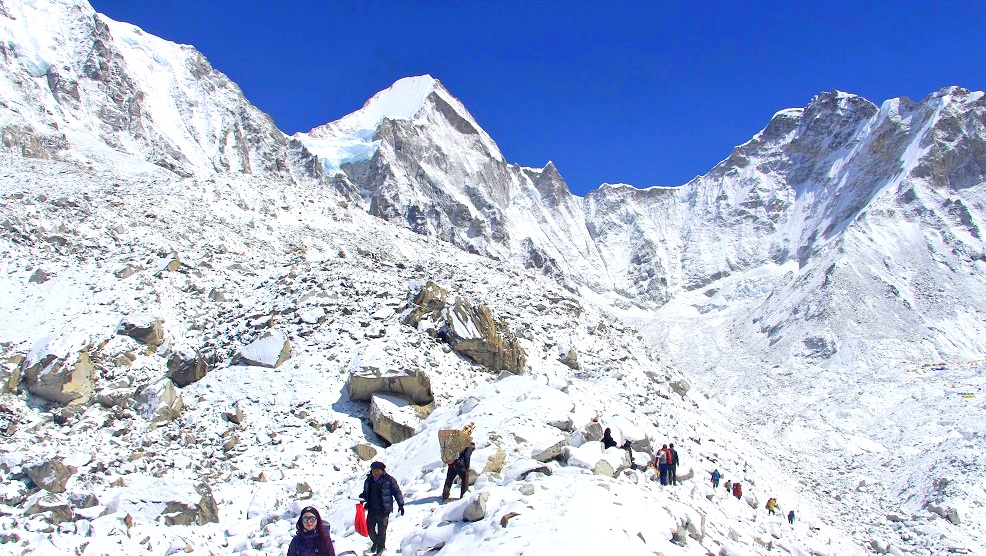
- Panoramic mountain views: Witness majestic peaks like Mount Everest, Lhotse, Nuptse, and Ama Dablam.
- Quieter trails: Enjoy a peaceful trekking experience with fewer crowds compared to the peak seasons.
- Sherpa culture: Explore traditional Sherpa villages and their warm hospitality in places like Namche Bazaar.
- Historic monasteries: Visit Tengboche Monastery, a spiritual center offering stunning views of Everest.
- Scenic flights: Begin your journey with an exhilarating flight to Lukla, the gateway to the Everest region.
- Dramatic landscapes: Trek through alpine forests, glacial moraines, and icy rivers.
- Kala Patthar viewpoint: Reach one of the highest points of the trek for unparalleled sunrise views of Everest.
- Sagarmatha National Park: Experience the diverse flora and fauna in this UNESCO World Heritage Site.
The Everest Base Camp winter trek is the perfect blend of adventure, natural beauty, and cultural immersion. With its quieter trails and crisp, clear skies, this journey during Nepal trekking in winter offers an unmatched experience. For anyone seeking to explore the grandeur of the Himalayas, the Everest Base Camp trek is an extraordinary adventure that leaves a lasting impression.
Annapurna Base Camp Trek
The Annapurna Base Camp winter trek is a captivating journey that leads adventurers through diverse landscapes and rich cultural experiences, right to the heart of the towering Annapurna massif. This trek is celebrated for its stunning vistas and the unique opportunity to walk through both lush lowland villages and high-altitude glacial zones, making it one of the most popular Best winter treks Nepal has to offer.
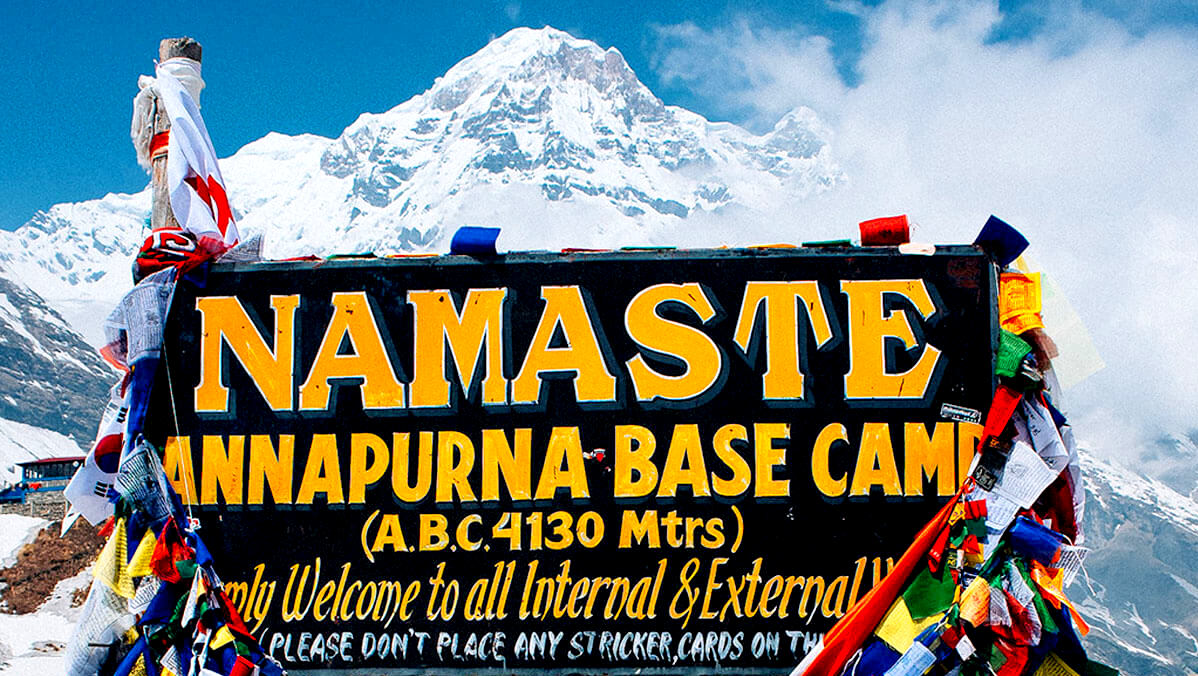
- Diverse Ecosystems: Traverse a variety of terrains from rhododendron forests to alpine meadows, each offering unique flora and fauna.
- Majestic Mountain Vistas: Enjoy close-up views of Annapurna I, Annapurna South, Machapuchare (Fishtail Mountain), and Hiunchuli.
- Cultural Immersion: Experience the warm hospitality of the Gurung and Magar communities in traditional villages like Ghandruk and Chhomrong.
- Machapuchare Base Camp: Pass through this important staging area that offers magnificent views of the sacred, unclimbed Fishtail Mountain.
- Spectacular Sunrises: Witness breathtaking sunrises over the Annapurnas and Dhaulagiri from Poon Hill, one of the most famous viewpoints in the Himalayas.
- Hot Springs: Soothe your muscles in the natural hot springs at Jhinu Danda, a perfect way to relax after days of trekking.
- Sustainable Trekking Practices: Engage in eco-friendly trekking practices in the Annapurna region, which is part of a conservation area.
- Annapurna Sanctuary: Stand amidst a natural amphitheater of snow-capped peaks, providing a 360-degree panorama that's simply unforgettable.
The Annapurna Base Camp winter trek not only challenges trekkers physically but also enriches them culturally and spiritually. The journey through Nepal trekking in winter offers clearer skies and quieter trails, enhancing the magical feel of the high-altitude Himalayan wilderness. Whether you are a seasoned trekker or a novice looking to tick a significant adventure off your bucket list, the Annapurna Base Camp trek promises an exhilarating and rewarding experience.
Ghorepani Poon Hill Trek
The Ghorepani Poon Hill winter trek is an ideal choice for those looking to experience the magnificence of the Nepal Himalayas winter without the extended time commitment required for higher altitude treks. Known for its accessibility and breathtaking panoramic views of the Annapurna and Dhaulagiri ranges, this trek is perfect for both novice and experienced trekkers looking for a shorter, yet deeply rewarding Himalayan adventure.
- Panoramic Views: The trek offers some of the best sunrise views over the Himalayas from Poon Hill, spotlighting giants like Annapurna South, Dhaulagiri, and Nilgiri.
- Cultural Richness: Traverse through vibrant Gurung and Magar villages, where you can immerse yourself in the local lifestyle and warm hospitality.
- Accessible Adventure: This trek is considered moderate and is more accessible to a wider range of physical fitness levels, making it a popular choice for families and less experienced trekkers.
- Rhododendron Forests: In the spring, the path is lined with Nepal's national flower, creating a spectacularly colorful landscape. Even in winter, the stark contrasts of the snow against the trees are striking.
- Bird Watching: The forests around Ghorepani are known for their birdlife, making this trek a delight for nature enthusiasts.
- Short Duration: Typically completed in 4-5 days, this trek fits well into a tighter schedule, allowing more time for other experiences in Nepal.
- Lower Altitude: At an elevation of just over 3,200 meters, Poon Hill provides a Himalayan panorama without the risk of high-altitude sickness.
- Ethical Trekking Practices: The area encourages sustainable tourism practices, helping preserve the natural and cultural beauty of the region.
The Ghorepani Poon Hill winter trek is a perfect blend of natural beauty, cultural exploration, and physical activity, all wrapped into a short but memorable journey. With its manageable challenge and the rewarding sunrise atop Poon Hill, it is a standout choice for a winter trek in Nepal, offering a snapshot of the best winter treks Nepal has to offer without demanding the time and endurance needed for longer routes.
Langtang Valley Trek
The Langtang Valley trek offers a remarkable experience that combines breathtaking landscapes, unique cultural encounters, and a serene atmosphere, making it one of the best winter treks Nepal hosts. This trek, which winds through the Langtang National Park, is less frequented during the winter months, providing a more peaceful and intimate connection with nature and the local Tamang communities.
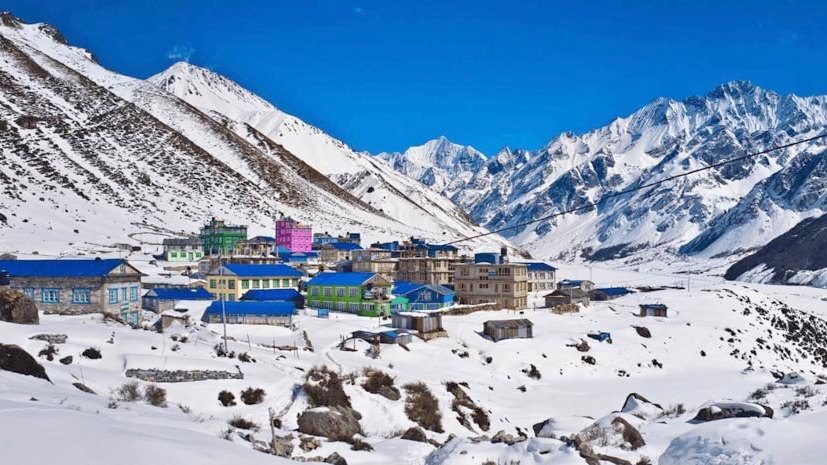
- Stunning Landscapes: Trek through diverse terrains, including bamboo forests, lush meadows, and rugged paths, with spectacular views of Langtang Lirung, Ganesh Himal, and other peaks.
- Cultural Richness: Immerse yourself in the unique Tamang culture, evident in the monasteries, prayer wheels, and friendly villages that dot the landscape.
- Wildlife Spotting: The region is home to rare species like the red panda and the Himalayan tahr, as well as an array of bird species, enhancing its appeal for wildlife enthusiasts.
- Kyanjin Gompa: Visit this significant Buddhist monastery located at 3,800 meters, serving as the spiritual and cultural hub of the valley.
- Local Cheese: Sample yak cheese at a local cheese factory in Kyanjin, which is a delightful way to engage with local agricultural practices.
- Accessible Altitude: The trek reaches a maximum altitude of about 5,000 meters at Tserko Ri, which provides stunning views without the extreme challenges of higher-altitude treks.
- Natural Calm: Winter in Langtang is notably quiet, offering a solitude that is rare in more popular trekking destinations like Everest or Annapurna.
- Recovery and Resilience: Witness the resilience of the Langtang region following the 2015 earthquake, with rebuilt trails and lodges, showing the community's commitment to welcoming trekkers.
The Langtang Valley trek in December is an excellent option for those who wish to experience the quieter side of the Himalayas. Its combination of natural beauty, cultural immersion, and relatively moderate trekking conditions make it a superb choice for your Nepal trekking in winter adventure. Whether you're a seasoned trekker seeking solitude or a first-timer looking to dip your toes into Himalayan trekking, Langtang Valley offers an enriching and manageable winter journey.
Gokyo Lakes Trek
The Gokyo Lakes winter trekking experience offers an extraordinary journey to the heart of the Everest region, providing trekkers with a less traveled, yet visually stunning alternative to the classic Everest Base Camp route. This trek is renowned for its series of beautiful turquoise lakes and the magnificent views from Gokyo Ri, making it one of the most scenic best winter treks Nepal has to offer.
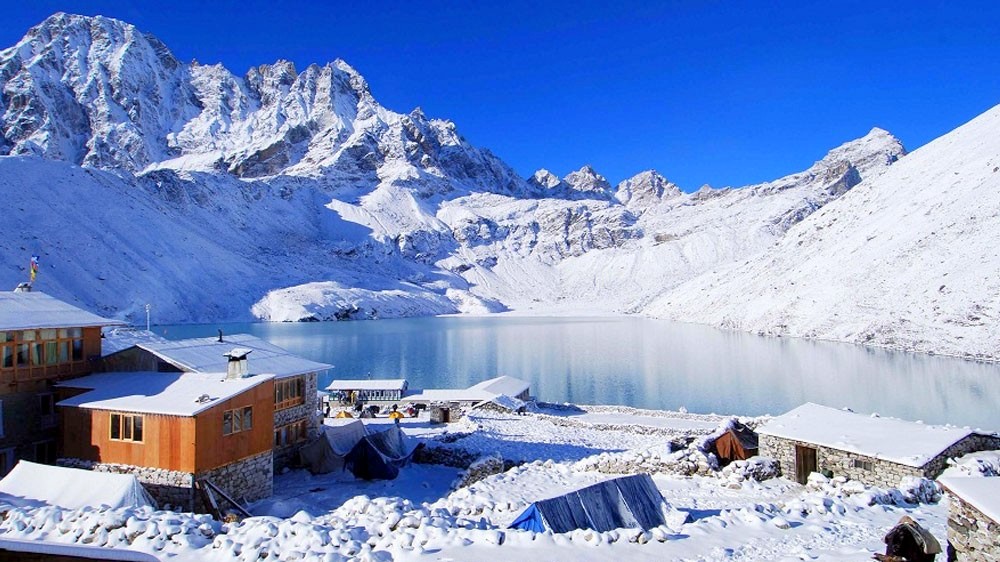
- Spectacular Gokyo Lakes: Explore the pristine Gokyo Lakes, a system of six high-altitude lakes that are among the highest freshwater lakes in the world.
- Gokyo Ri Summit: Ascend Gokyo Ri (5,357m) for panoramic views of Everest, Lhotse, Makalu, and Cho Oyu – four of the highest peaks on Earth.
- Ngozumpa Glacier: Trek alongside Ngozumpa Glacier, the longest glacier in the Himalayas, offering awe-inspiring landscapes unique to this region.
- Renjo La Pass: Optional crossing of the Renjo La pass offers adventurous trekkers the chance to experience one of the less frequented passes in the Everest region with breathtaking vistas.
- Flora and Fauna: The trek passes through Sagarmatha National Park, home to diverse species including the elusive snow leopard and the Himalayan tahr.
- Quieter Trails: Enjoy the solitude of less crowded paths, which is particularly appealing during the winter months, providing a more peaceful and contemplative trekking experience.
- Sherpa Culture: Experience the rich Sherpa culture in the small, remote villages and monasteries that dot the landscape, offering insights into the spirituality and traditions of the local people.
- Flexible Itineraries: The Gokyo Lakes trek can be extended or combined with other routes like the Everest Base Camp trek or the passes in the region, allowing for a customizable and comprehensive exploration of the Khumbu area.
The Gokyo Lakes winter trekking adventure is an ideal choice for those looking to explore the beauty and tranquility of the Everest region in a unique and less conventional manner. With its stunning alpine scenery and the serene Gokyo Lakes coupled with challenging ascents like Gokyo Ri, this trek promises a rewarding experience for those willing to brave the Nepal trekking in winter conditions. Whether you’re a photographer, a solitude seeker, or a mountain enthusiast, the Gokyo Lakes trek offers a compelling blend of natural beauty, cultural richness, and physical challenge.
Mardi Himal Trek
The Mardi Himal Trek in winter offers a quieter, off-the-beaten-path adventure in the Annapurna region, making it an excellent choice for those seeking a more solitary and intimate trekking experience. This trek showcases some of the best views of the famous peaks of Machapuchare, Annapurna South, and Hiunchuli, providing a less commercialized path in one of the most beautiful areas of Nepal. This trek is gaining popularity for its pristine beauty and the up-close views of the mountains, making it a compelling addition to the best winter treks Nepal list.
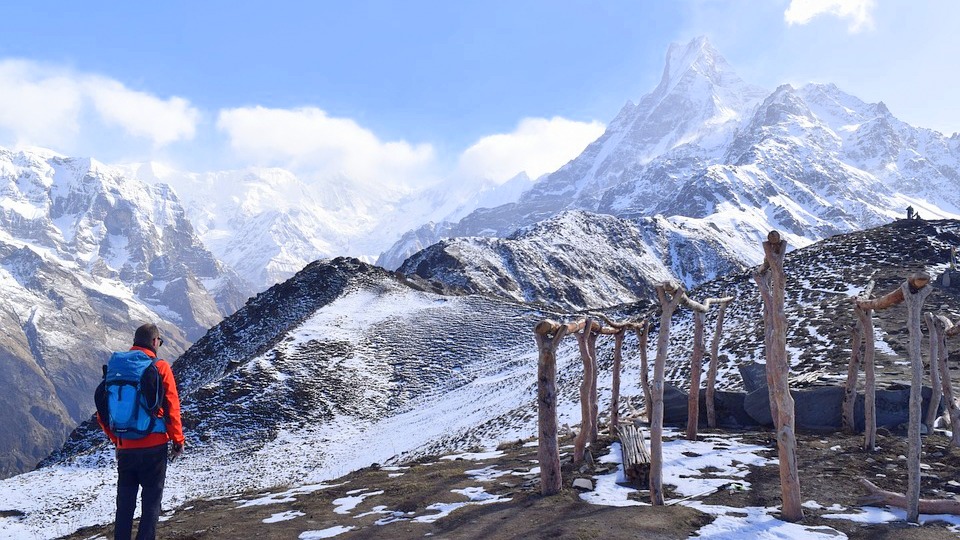
- Stunning Mountain Views: Enjoy up-close vistas of Annapurna South, Hiunchuli, Machapuchare, and Mardi Himal itself, which are especially clear and striking in the winter months.
- Less Crowded Trails: Experience the peace of the Himalayas without the crowds found on more popular treks like the Annapurna Base Camp or Everest Base Camp.
- Varied Ecosystems: Trek through lush rhododendron forests, alpine meadows, and rugged mountain terrain, showcasing the diverse ecological zones of the Annapurna region.
- High Altitude Camps: Stay at unique high-altitude campsites like High Camp and Base Camp, which provide breathtaking morning views that are a photographer’s delight.
- Traditional Villages: Pass through charming villages such as Siding and Low Camp, offering insights into the rural lifestyle and the rich culture of the ethnic Gurung people.
- Manageable Duration: Typically completed within a week, this trek is perfect for those with limited time but a desire to experience a substantial Himalayan adventure.
- Sustainable Trekking Option: The Mardi Himal Trek is part of eco-tourism projects aimed at bringing sustainable benefits to local communities.
- Accessible Adventure: While offering moderate to challenging hikes, this trek is more accessible compared to higher altitude treks, making it a good option for less experienced trekkers seeking authentic adventure.
The Mardi Himal Trek in winter is an exceptional choice for adventurers looking to explore the quieter side of the Annapurna region. Its relatively short duration, combined with spectacular mountain scenery and cultural richness, offers a fulfilling trekking experience. Perfect for those who appreciate solitude and unspoiled nature, the Mardi Himal Trek is a journey that highlights the tranquil beauty and the dramatic landscapes of the Nepal trekking in winter season.
Upper Mustang Trek
The Upper Mustang trek winter presents an extraordinary trekking experience, showcasing landscapes that are starkly different from the lush greenery typically associated with Nepal. Known as the "Last Forbidden Kingdom," Upper Mustang offers a glimpse into a preserved, starkly beautiful high-desert region influenced heavily by Tibetan culture. This trek is ideal for those looking to explore unique cultural heritage and dramatic, arid landscapes during the Nepal trekking in winter, making it a standout among the best winter treks Nepal.
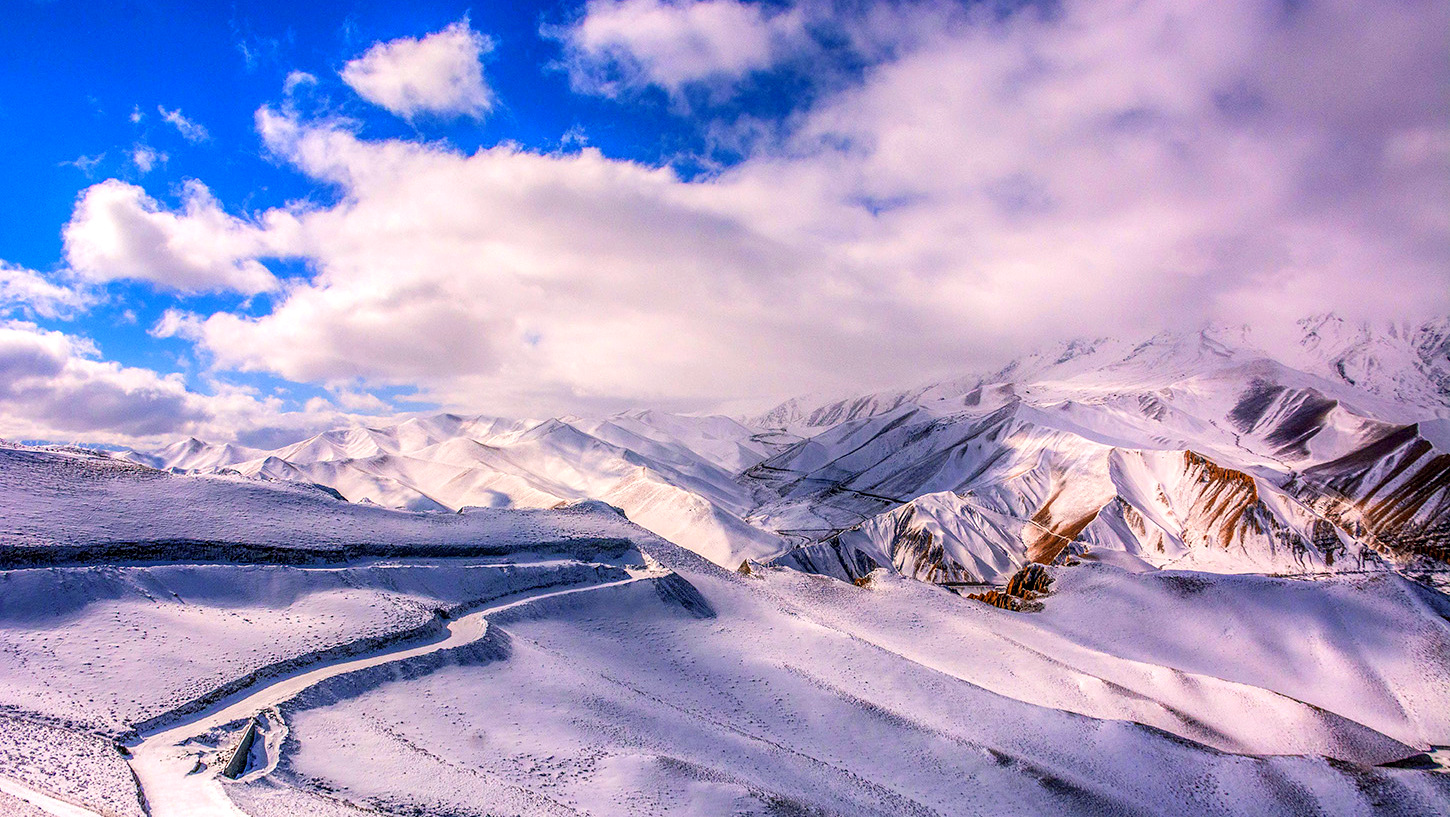
- Unique Landscape: Explore the arid, desert-like terrain with deep ravines and rock shelves, flanked by snowy peaks—a stark contrast to Nepal’s more verdant regions.
- Tibetan Culture: Delve into the rich Tibetan traditions of the local Loba people, visiting ancient monasteries like Lo Gekar and the 15th-century Thugchen Gompa in Lo Manthang.
- Lo Manthang: Discover the walled capital of the former kingdom of Mustang, which houses royal palaces and important religious sites, offering a rare peek into a well-preserved medieval town.
- Cave Art and Archaeology: Investigate sky caves and centuries-old murals, some of which are accessible only by scaling sheer cliff faces, revealing Mustang’s historical significance as a hub on the ancient Silk Road.
- Festivals: If timed right, witness the Tiji Festival in Lo Manthang, a vibrant event featuring ritual dances and traditional Tibetan music, which is especially mesmerizing during the winter months.
- Challenging Passes: Traverse challenging passes like Nyi La and Gyu La, offering rewarding vistas and a sense of adventure in the remote Himalayan wilderness.
- Rare Flora and Fauna: Spot unique wildlife adapted to the high desert environment, including the elusive snow leopard and blue sheep, enhancing the trek's appeal to nature lovers.
- Photography Opportunities: Capture the striking contrasts between the bright blue skies, the red and brown landscape, and the white snow-capped peaks—ideal for avid photographers.
The Upper Mustang trek winter is more than just a physical journey—it's a voyage back in time to a place where ancient Tibetan culture remains largely intact, untouched by the modern world. This trek offers an unparalleled opportunity to experience a unique part of the Himalayas, characterized by its cultural richness and dramatic landscapes. For those looking for an alternative Himalayan adventure with fewer crowds and more cultural depth, the Upper Mustang trek provides a profound and unforgettable Nepal trekking in winter experience.
Tamang Heritage Trail
The Tamang Heritage Trail winter offers a unique trekking experience that delves deep into the rich culture and daily lives of the Tamang people, an indigenous community in Nepal. This trail, less known than the more frequented routes to Everest or Annapurna, provides a perfect blend of cultural immersion and natural beauty. Situated just north of Kathmandu, this trek takes you through traditional villages and stunning landscapes, making it one of the more culturally enriching best winter treks Nepal has to offer.
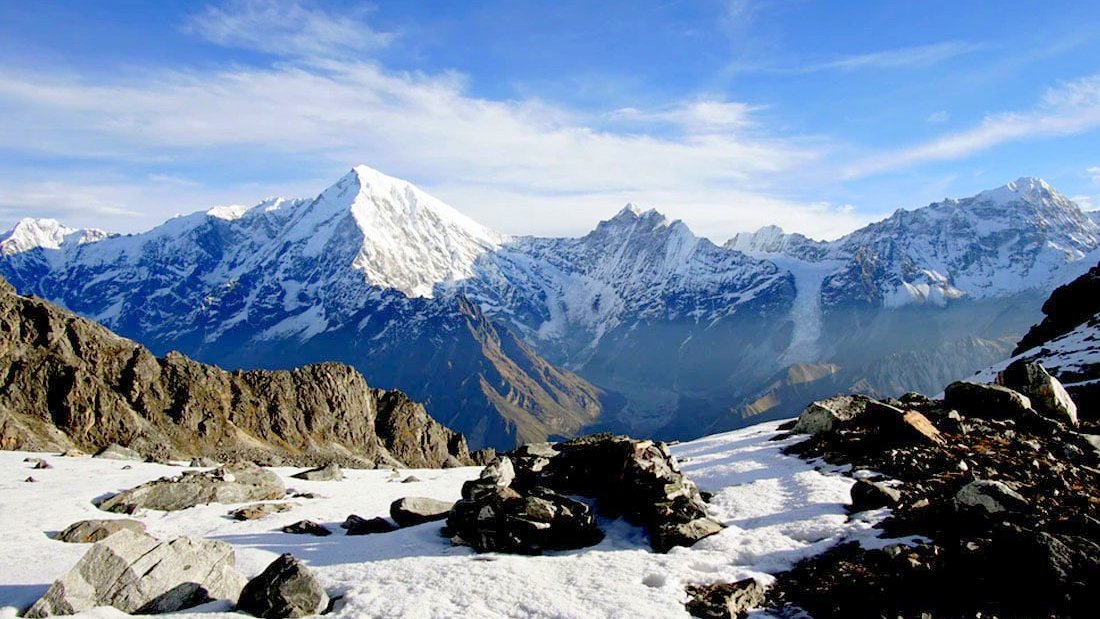
- Cultural Immersion: Experience the authentic lifestyle, customs, and traditions of the Tamang people, including their Tibetan-influenced language, crafts, and festivals.
- Scenic Beauty: Enjoy views of Langtang Lirung, Ganesh Himal, and other Himalayan peaks. The trail winds through terraced fields, bamboo forests, and alpine terrain dotted with monasteries and prayer flags.
- Healing Hot Springs: Soak in the natural hot springs in Tatopani, believed to have healing properties, offering a relaxing respite after days of trekking.
- Traditional Architecture: Admire the unique architecture of the Tamang villages with their beautifully carved wooden porches and colorful decorations.
- Handicrafts and Art: Witness and participate in local crafts like basket weaving and woodcarving, providing insight into the artistic heritage of the Tamang community.
- Local Cuisine: Sample traditional foods like dhido (a buckwheat or millet porridge) and thukpa (Tibetan noodle soup), offering a taste of the regional cuisine.
- Wildlife Observation: The region is home to diverse wildlife, including red pandas and various bird species, enhancing the trek's appeal for nature enthusiasts.
- Community Projects: Engage with community-led tourism projects that promote sustainable development and support local livelihoods through your visit.
The Tamang Heritage Trail winter is an excellent choice for trekkers looking to combine scenic hiking with a deep cultural experience. This trek not only showcases the breathtaking landscapes typical of Nepal trekking in winter but also provides a profound understanding of the Tamang culture. It's perfect for those who wish to explore beyond the conventional trekking routes and are eager to contribute to community-based tourism initiatives. With its rich cultural insights and beautiful natural settings, the Tamang Heritage Trail offers a memorable and meaningful journey through the heart of Nepal.
Things to consider while doing Winter Treks in Nepal
Embarking on a winter trek in Nepal presents a unique set of challenges and rewards. The cold season offers clearer skies and fewer crowds, but it also requires careful preparation and consideration due to the colder temperatures and potentially harsh conditions. Here are key things to consider when planning winter treks in Nepal:
- Weather Conditions: Winter in Nepal can be bitterly cold, especially at higher altitudes. Daytime temperatures can be pleasant, but nights are typically freezing. Prepare for sudden weather changes by checking the forecast and consulting with local trekking agencies.
- Appropriate Gear: Ensuring you have the right gear is crucial. This includes a high-quality sleeping bag rated for sub-zero temperatures, insulated boots, thermal clothing layers, gloves, a warm hat, and a sturdy tent if you are camping. Sunglasses and sunscreen are also essential due to the stronger UV rays at high altitudes.
- Altitude Sickness: The risk of altitude sickness increases in winter due to colder air having less oxygen. It's important to acclimatize properly by ascending slowly and taking rest days. Know the symptoms of altitude sickness and be prepared to descend if they appear.
- Trail Navigation: Snow and ice can make trails slippery and obscure paths, making navigation challenging. Always trek with a knowledgeable guide who knows the route and can handle emergency situations. GPS devices and maps are also helpful.
- Fewer Services: Many teahouses and lodges in remote areas close during the winter due to the harsh conditions and reduced number of visitors. Verify which accommodations are open and plan your trekking route accordingly to ensure you have places to stay.
- Physical Preparation: Trekking in snow and cold weather requires good physical condition. Prepare with cardiovascular and strength training several months in advance to ensure you can handle the demands of trekking in winter conditions.
- Hydration and Nutrition: Cold weather can reduce your sense of thirst, which increases the risk of dehydration. Drink plenty of water and carry a thermal flask to keep liquids from freezing. High-calorie, high-energy foods are crucial as your body burns more calories in cold conditions.
- Emergency Preparedness: Always carry a first aid kit tailored for winter trekking, which should include treatment for frostbite, altitude sickness, and common injuries. Satellite phones or radios can be lifesaving in areas without mobile reception.
- Environmental Considerations: Winter trails are more sensitive to environmental impact. Practice Leave No Trace principles to minimize your footprint. This includes packing out all trash, respecting wildlife, and avoiding making fires.
- Local Customs and Festivals: Winter is a time for many vibrant festivals in Nepal, such as Lhosar (Tibetan New Year). Participating in local celebrations can enhance your trekking experience but be respectful of cultural practices and traditions.
By considering these factors, you can ensure a safer and more enjoyable winter trekking experience in Nepal, fully prepared to tackle the unique challenges and embrace the stark beauty of the Himalayas during the colder months.
Essential Tips for the Best Winter Treks in Nepal
Winter trekking in Nepal offers a distinct and thrilling experience, presenting unique challenges along with breathtaking views of the snow-covered Himalayas. To make the most of your winter adventure, consider the following essential tips:
- Choose the Right Trek: Some treks are more suitable for winter than others due to their altitude and the availability of open teahouses. Popular winter treks include the Everest Base Camp, Annapurna Base Camp, Poon Hill, and Langtang Valley. Select a trek that matches your experience and fitness level.
- Prepare for Cold Weather: Temperatures can drop significantly, especially at higher altitudes. Invest in good quality, insulated, and waterproof gear. Essential items include a down jacket, thermal layers, warm gloves, a beanie, and thermal socks. A high-quality four-season sleeping bag and an insulated sleeping pad are also critical.
- Hire an Experienced Guide: Navigating trails in winter can be challenging due to snow and ice. A knowledgeable local guide not only ensures your safety but also enhances your trekking experience by sharing insights about the local culture and environment.
- Acclimatize Properly: The risk of altitude sickness remains in winter. Take necessary acclimatization days during your trek and be aware of the symptoms of altitude sickness. If symptoms appear, do not hesitate to descend or seek medical help.
- Stay Hydrated and Well-Fed: In cold weather, you may not feel thirsty, but dehydration is still a risk. Drink plenty of fluids and avoid alcohol. Eat high-energy foods to sustain your energy levels throughout the trek.
- Check Weather and Avalanche Risks: Winter weather can be unpredictable. Regularly check the weather forecast and be prepared for sudden changes. Be aware of avalanche risks in certain areas, and consult with local experts before heading into risky zones.
- Pack Light and Smart: While you need to be prepared with warm clothes and gear, it's also important to pack light to make your trek less strenuous. Optimize your packing list to include only what is necessary but have enough to keep you warm and safe.
- Protect Your Skin and Eyes: The sun can be particularly strong in the mountains, reflected by the snow. Use a high SPF sunscreen and carry lip balm to protect against chapped lips. Sunglasses or goggles are a must to prevent snow blindness.
- Carry Emergency Supplies: Include a basic first aid kit, a repair kit for your gear, matches or a lighter, a headlamp with extra batteries, and a whistle. These items can be lifesaving in emergency situations.
- Respect Local Culture: Winter is a significant time for many local festivals and rituals. Engage respectfully with local communities and participate in cultural experiences if possible, enhancing your trekking experience.
By following these tips, you’ll be well-prepared to tackle the challenges of winter trekking in Nepal, ensuring a safe, enjoyable, and memorable journey through some of the world’s most stunning landscapes.
Winter Trekking Tips
- Layer Up: Dress in layers using moisture-wicking fabrics to stay warm and dry.
- Check the Weather: Always check the forecast and be prepared for sudden changes.
- Stay Hydrated: Drink plenty of water and carry a thermal bottle to prevent freezing.
- Hire a Guide: Employ an experienced guide for safe navigation and local insights.
- Pack Essentials: Bring a good quality sleeping bag, sunscreen, sunglasses, and a first aid kit.
Winter trekking in Nepal offers a unique and mesmerizing experience, providing trekkers with quieter trails, clearer skies, and the breathtaking beauty of snow-capped mountains. From the majestic Everest Base Camp to the culturally rich Annapurna Circuit and the serene trails of Langtang Valley, each trek presents its own set of challenges and rewards. By preparing adequately with the right gear, hiring knowledgeable guides, and respecting local customs and weather conditions, adventurers can enjoy the profound beauty and solitude of the Himalayas in winter. This season transforms Nepal into a tranquil wonderland of ice and snow, making it an ideal time for those seeking a truly remarkable trekking experience.
FAQs of the Best Winter Treks in Nepal
Q: What are the best treks to do in Nepal during winter?
A: The Everest Base Camp, Annapurna Base Camp, Poon Hill, Langtang Valley, and the Gokyo Lakes trek are excellent choices for winter trekking due to their stunning landscapes and relatively accessible routes.
Q: Is winter a good time for trekking in Nepal?
A: Yes, winter is a great time for trekking in Nepal if you are prepared for cold weather. The trails are less crowded, the skies are clearer, and the mountain views are at their best.
Q: What special gear do I need for winter trekking in Nepal?
A: Essential winter gear includes a four-season sleeping bag, thermal layers, waterproof and insulated boots, a down jacket, gloves, a hat, and sunglasses to protect against the strong sun reflected off the snow.
Q: How do I prepare for high altitude during winter treks?
A: Acclimatize properly by ascending slowly, incorporating rest days into your itinerary, and staying hydrated. Be aware of the symptoms of altitude sickness and ready to descend if necessary.
Q: Are the teahouses open during winter on popular trekking routes?
A: Most teahouses on popular trekking routes like Everest Base Camp and Annapurna Base Camp remain open in winter, but some might close, especially on less frequented trails, so it's best to check in advance.
Q: What are the risks of trekking in Nepal during winter?
A: The main risks include colder temperatures, potential avalanches in certain areas, and the possibility of high altitude sickness. Preparedness and local guidance are crucial to managing these risks.
Q: Can I complete the Everest Base Camp trek in winter?
A: Yes, the Everest Base Camp trek can be completed in winter. However, trekkers should be prepared for cold temperatures and potentially challenging weather conditions.
Q: How do I deal with the cold on a winter trek?
A: Layer appropriately with high-quality thermal wear, protect extremities with gloves and warm socks, use hand warmers, and ensure your sleeping gear is suitable for sub-zero temperatures.
Q: What should I eat during a winter trek in Nepal?
A: Opt for high-energy foods like chocolates, nuts, dried fruits, and traditional Nepali meals like dal bhat, which provide both warmth and calories needed for trekking.
Q: Are guides necessary for winter trekking in Nepal?
A: Hiring a guide is highly recommended for winter treks. Guides not only ensure safety and help with navigating snowy trails but also enhance your understanding of the local culture and environment.



